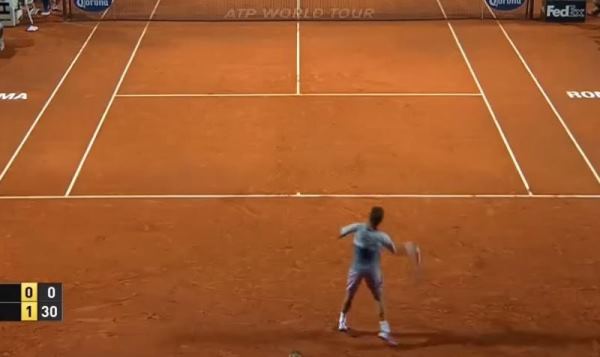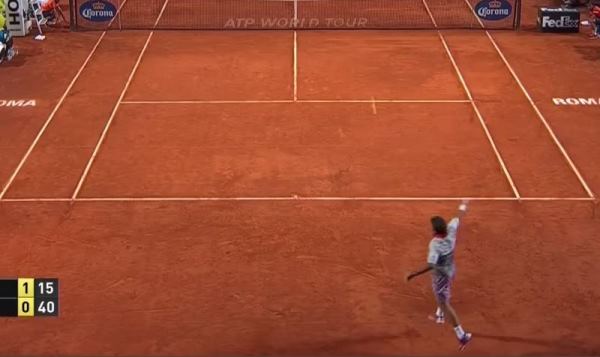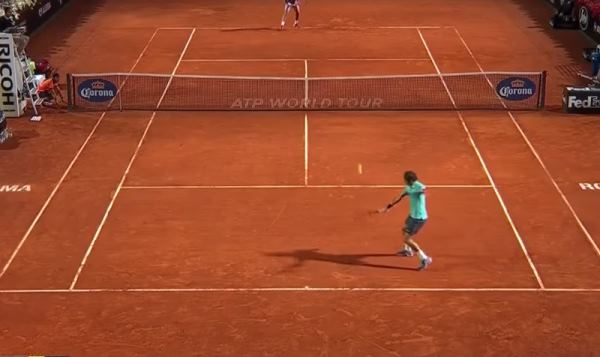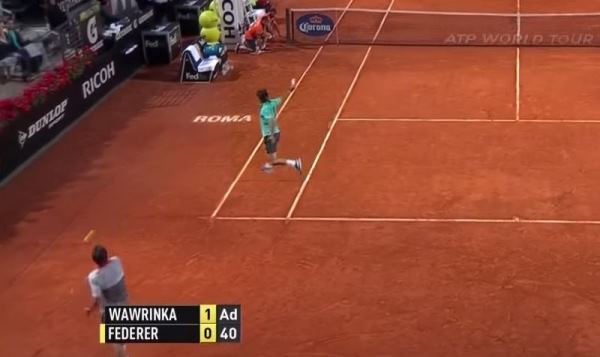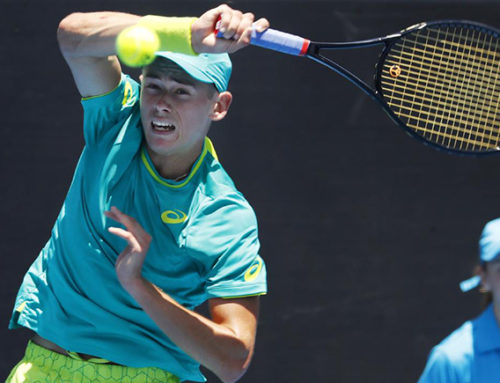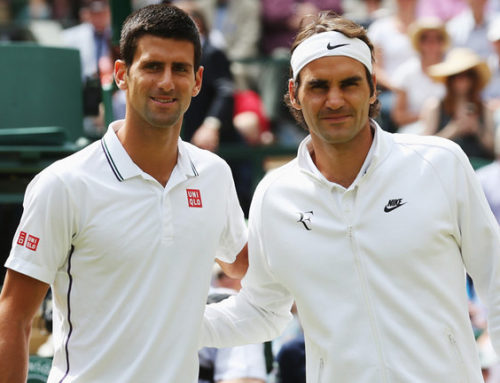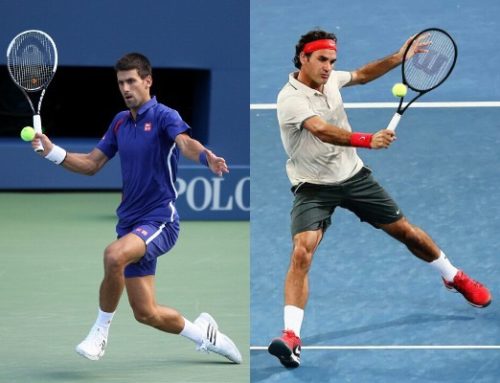In the wake of Wawrinka’s scintillating performance against Nadal in Rome, it would have been easy to see him dispatching Federer with at least equal, if not greater, ease. While Nadal’s year has clearly been sub-par on the red dirt, Wawrinka earned his with over the King of Clay with aplomb. Federer’s comfortable win was neither luck nor the result of poor play from Wawrinka. Rather it came largely down to one key factor – the second serve return.
Even more so than on the other surfaces, clay court tennis at the professional level is a battle of positioning. It is about controlling space – pushing your opponent back and gaining ground to put yourself in a position to attack. In this regard there was a marked difference in the approach by the two players. One of the very things that served Wawrinka so well against Nadal proved a large part of his downfall against Federer.
Wawrinka Vs Nadal
In this image we see a typical return position for Wawrinka against Nadal. Wawrinka is standing extremely deep behind the baseline to return Nadal’s second serve. However in this instance it was an intelligent play. Nadal gives up ground on the baseline relatively easily on all surfaces, happy to trust in his heavy ball and work ethic to grind opponents down. By standing back, Wawrinka was able to run around many of Nadal’s second serves and hit a deep, heavy forehand. In doing so he pushed Nadal back and gained court position. Nadal won a paltry 36% of his second serves, largely as a result of this strategy.
Wawrinka Returning Federer
You can see here that Wawrinka’s in a similarly deep position to return Federer’s second serve. In face the depth is almost identical. So why does this work against Nadal on clay, but not Federer?
For starters the fact that Wawrinka is hitting a backhand instead of a forehand. Nadal is extremely predictable in his serving locations, tending to serve almost exclusively to his opponent’s backhand. In comparison Federer has the ability to hit his second serve wide more aggressively than Nadal can, a guaranteed ace on clay if the returner moves to run around the backhand. This means Wawrinka is trapped into hitting predominantly backhand returns off the Federer second serve. Wawrinka has a fantastic backhand (likely the best in the game at present), but when it comes to return of serve Wawrinka’s forehand is a more effective return on clay. Wawrinka’s forehand is a heavier ball than his backhand and pushes his opponent back more. Where Stan’s forehand consistently gained him court position on the second serve return against Nadal, his backhand wasn’t able to do the same to Federer (who naturally resists giving up ground far more than Nadal does).
Federer Returning Wawrinka
We can immediately see that Federer is comfortably inside the baseline to return Wawrinka’s second serve. His positioning takes time away from Wawrinka, not allowing him to get his feet set well after the serve. On the deuce court Federer used a variety of strategies on the second serve return. In the image above, he is hitting the slice return, which he would often chip and charge behind. At other times he would hit over the ball from a similar position, and at others still retreat back to an almost Wawrinka-like position to hit the topspin backhand. The constantly varying position kept Wawrinka off balance as he never knew how much time he would have after the serve before hitting his first ball, and whether or not that first ball would be a passing shot.
On the ad court the diffence was perhaps even more marked. On that side Federer almost never moved back, and was constantly pressing up to catch the return early.
This image shows the difference in approach between the two players in the most clear manner possible. Federer is significantly inside the baseline to strike a crosscourt return. Wawrinka has retreated to well behind the baseline, and in doing so given up court position and granted Federer time. It is perhaps fitting then that Federer’s backhand in this image was a crosscourt winner to seal his break at 4-4 in the first set.
Conclusion
Nobody in their right mind would argue that Federer’s topspin backhand is better than Wawrinka’s. Wawrinka consistently has both more power and more consistency off that win. And yet in the way that mattered most in this match Federer’s backhand was the superior shot purely because of his feet. Federer’s willingness to step up and take the second serve return early on the clay was the largest deciding factor in the match. Federer won 62% of his second service points across both sets with Wawrinka stepping back and taking the return from deep in the court. Under the pressure of Federer’s attacking returns, Wawrinka managed to win only 33% of his own second serves – a number that makes it exceedingly difficult to win any match.
